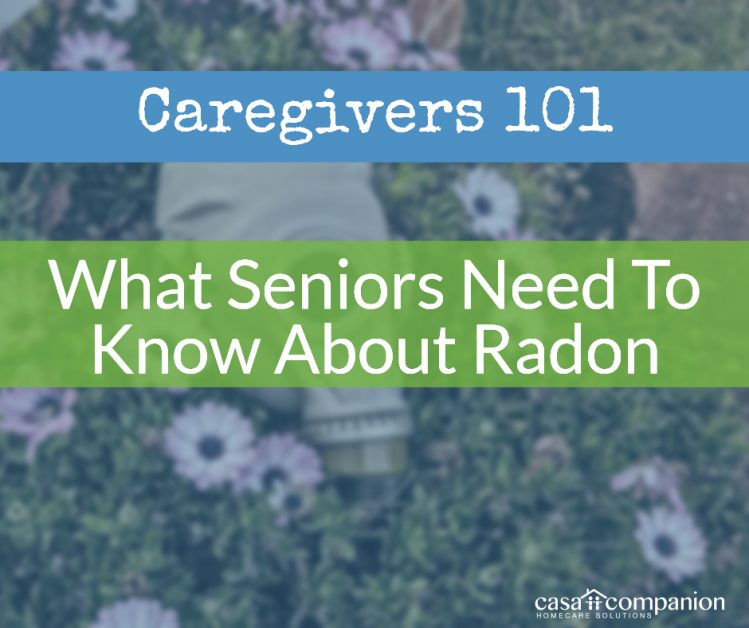
January is National Radon Action Month. If the danger of radon isn’t on your mind, you’re not alone. A study by the CDC shows that most people underestimate the risk radon poses them, if they don’t dismiss it completely. Radon is odorless and colorless, so it’s easy to overlook – until it’s too late. Seniors are just one of the groups that are at higher risk of succumbing to radon poisoning, especially if they smoke, or have smoked, and are living in an older home. Caregivers, home care aides and loved ones need to know how to address the risks and signs of radon poisoning.
Radon gas is colorless, odorless, and radioactive, formed by the decay of certain elements in soil and rocks. The formation of this gas is a totally natural process that can occur in any neighborhood, under any kind of building. When radon gas forms under a home, it can enter the home above through any size crack in the walls, floors, or foundations. It can travel through gaps around pipes, pumps and wires into the living space of unsuspecting residents. decay. Some building materials can even emit radon, if they’re made from natural substances.
Where carbon monoxide, another deadly household gas, kills silently and quickly, radon acts over time. The gas breaks down into tiny radioactive particles that lodge in the lungs. These radon particles emit radioactivity into the body, damaging the lungs and often leading to lung cancer. Lung cancer is the leading cause of cancer death in the United States, and radon exposure is the number two environmental cause of lung cancer. Tobacco is the primary environmental cause, and so current and former smokers are at a higher risk of developing lunch cancer from radon exposure.
Seniors who are aging in place in a home they’ve owned for decades are also at a higher risk. The EPA launched an official radon testing certification program in 1986, and it has become a formal part of home buying and rental property management. However, as a home and the homeowner age, radon can become more of a problem. An aging home that passed a test once can develop cracks and gaps that radon can use to invade the living space. A test result from the past may no longer be accurate. And seniors aging in place may spend more time indoors or open the windows and doors less often in winter. Even low levels can be harmful if the gas accumulates and lingers. Finally, seniors who are still smoking, or smoked at some point in the past, are more susceptible to damage, because their lungs are already impaired from the smoking.
Unfortunately, there are no symptoms of radon exposure. The first signs of any kind of problem would be the symptoms of lung cancer, which would take a loved one who has never smoked by surprise. The symptoms of lung cancer, according to the National Radon Defense website, include:
- Persistent cough
- Hoarseness
- Wheezing
- Shortness of breath
- Coughing up blood
- Chest pain
- Frequent infections like bronchitis and pneumonia
- Loss of appetite
- Weight loss
- Fatigue
Caregivers, home care aides and seniors should consult a doctor immediately if they think a loved one is experiencing any of these symptoms. As with all kinds of cancer, early detection offers the best hope of a successful treatment. Winter is the best time to test radon levels in your home, and the California Department of Public Health is offering free radon test kits during January 2019. Disclaimer: one per household, until supplies run out. San Diego is a ‘low risk’ area according to the EPA’s national map, but radon levels can vary from one neighborhood to the next, and one home to the next. Take this opportunity to test your loved one’s home for radon, because you can’t fight what you don’t know is there.
